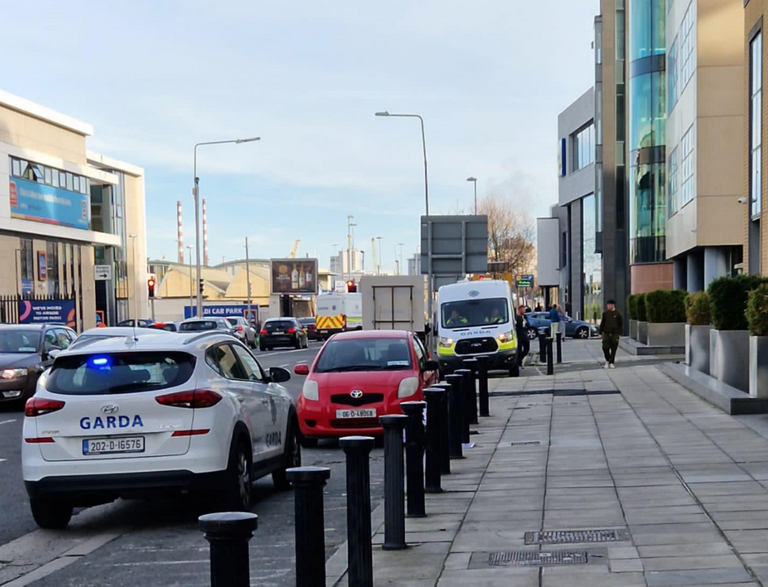
Photo taken from The Gript.
The Tenement buildings were multi-family apartment buildings typically located in the centre of Dublin. They have long been a source of controversy due to their poor living conditions and negative impact on public health. The overcrowding issue began in the 18th century, and by the time of the First-World War, over 20,000 Irish families were cramped in inhumane conditions.
Despite efforts to improve the conditions of these buildings, there are still compelling reasons to consider closing them down. In this article, we will explore the top ten reasons to close down tenement buildings and similar crowded buildings, backed up by scientific research.
1. Overcrowding
Tenement buildings are often overcrowded, with multiple families living in a single apartment. This can lead to a range of health problems, including respiratory infections, mental health issues, and increased risk of domestic violence.
2. Inadequate sanitation
In tenement buildings, shared toilets and bathrooms can be unclean and lack proper maintenance. This increases the risk of infectious diseases such as hepatitis A, salmonella, and E. coli. A study published in Wellcome Open Research found that overcrowded living conditions and poor sanitation were linked to higher rates of infectious disease transmission.
3. Deadly disease
Overcrowding leads to poor sanitation, and that’s how we get the spread of deadly diseases. Dwellers of tenement houses died younger and more often they died of tuberculosis. Tuberculosis led to the deaths of thousands of Irish people from the 1940s to the 1980s.
Covid recently has killed thousands of Irish people, most of which were living in cramped nursing homes. Developing more of these overcrowded housing units will lead to the further spread of covid and even a more deadly pandemic in the future.
4. Poor air quality
Tenement buildings are often old and poorly ventilated, leading to indoor air pollution. This can cause respiratory problems, allergies, and other health issues. According to a study published in the Journal of Environmental Health, people living in older apartment buildings are more likely to experience poor air quality and its associated health risks.
5. Lack of natural light
Tenement buildings are often constructed close to each other, which can result in a lack of natural light for residents. This can lead to vitamin D deficiency, which is associated with a range of health problems, including bone disorders, diabetes, and depression.
6. Structural issues
Many tenement buildings are old and poorly maintained, with structural issues such as crumbling walls, leaky roofs, and faulty electrical systems. These issues can lead to hazards such as fires, gas leaks, and collapsing ceilings.
In the 20th century, there had been numerous famous building collapses, such as the collapse of houses in 1913. This led to an inquiry which discovered that local councilors owned these properties that were declared unfit for human inhabitation.
7. Increased risk of crime
Tenement buildings are often located in high-crime areas, which can put residents at risk of violence and property crime. According to a study published in the Journal of Interpersonal Violence, people living in crowded housing conditions are at higher risk of experiencing violence.
In East Wall, Dublin City Ireland, a controversial asylum centre is home to 300-600 people who are mostly men. A video went viral showing a large group of men fighting and actually throwing road signs at each other. Locals report that police are called to that facility 3-4 times a week, which put a strain on local resources.
8. Lack of community resources
Tenement buildings are often located in areas with limited access to community resources such as schools, libraries, and community centres. This can result in a lack of educational and social opportunities for residents.
The Irish Nurses and Midwives Organisation has warned the Irish minister for housing that the housing crisis will cause staffing issues for the new Children’s hospital. Ireland in general is overcrowded and hospital waiting lists can go beyond two years for cancer treatments.
9. Noise pollution
Due to the close proximity of tenement buildings, residents are often exposed to high levels of noise pollution. This can lead to sleep disturbances, stress, and hypertension. Research has found that noise pollution was associated with a range of health problems, including cardiovascular disease and cognitive impairment.
10. Lack of privacy
Tenement buildings often have shared spaces such as hallways and yards, which can result in a lack of privacy for residents. This can lead to social and psychological problems, including anxiety and depression.
In conclusion, there are many compelling reasons to consider closing down tenement buildings, including poor air quality, inadequate sanitation, overcrowding, and structural issues. These issues can lead to a range of health and social problems for residents. While efforts can be made to improve the conditions of these buildings, in some cases, the best solution may be to close them down and invest in alternative housing options. By doing so, we can improve the health and well-being of our communities.
Erin go Bragh
The Dublin Protest Committee
References:
https://www.historyireland.com/the-tenements/
https://wellcomeopenresearch.org/articles/6-347
http://www.census.nationalarchives.ie/exhibition/dublin/poverty_health.html
Burroughs, H., & Hansen, E. (2016). Indoor Air.